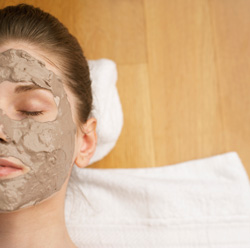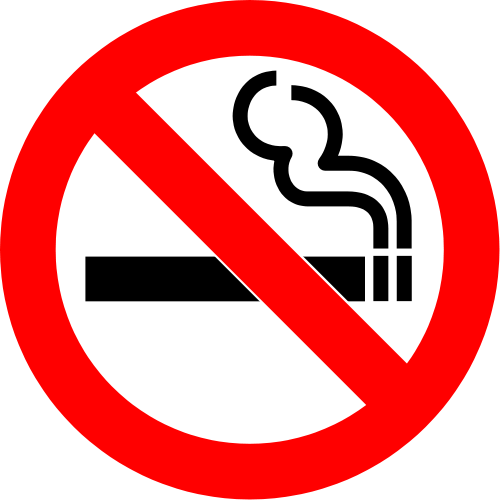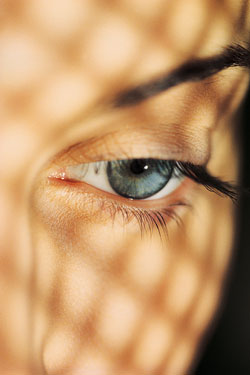- Integrated Body Therapies
Christine A. Ruppert, LMT5712 Stillwell Road
Rockville, MD 20851301-231-8695
Wellness
Better Sleep With Massage Therapy
 When is the last time you can recall getting a good night’s sleep? More often than not, we find that it is harder to achieve (and if you have recently, good for you!).
When is the last time you can recall getting a good night’s sleep? More often than not, we find that it is harder to achieve (and if you have recently, good for you!).
A lack of sleep can cause a lot more damage than a few yawns the next day. When we don’t sleep we become less alert, with lower reaction times. We have a tendency to eat more. Long-term affects include increased blood pressure and risk for obesity and diabetes. continue reading
Remember to Be Thankful for Health
 We’re already halfway through November and Thanksgiving is right around the corner. I know we all try to be thankful everyday for what we have, but it’s also nice to have a day where we come together with family and reflect on the things in our life we are grateful for. So in the spirit of the holidays, I wanted move away from a more informative approach this week and devote more time to reflecting on one of the best gifts of all: great health. continue reading
We’re already halfway through November and Thanksgiving is right around the corner. I know we all try to be thankful everyday for what we have, but it’s also nice to have a day where we come together with family and reflect on the things in our life we are grateful for. So in the spirit of the holidays, I wanted move away from a more informative approach this week and devote more time to reflecting on one of the best gifts of all: great health. continue reading
Massage Therapy’s Role in Healthier Skin
 There are a lot of things to be grateful for this month, but have you thought about your skin? The skin is the largest organ in the body and protects our body as a first line of defense from millions of harmful environmental elements everyday. Healthy skin is imperative to your overall health. That’s why it’s important to make sure that you are taking care of your skin properly. continue reading
There are a lot of things to be grateful for this month, but have you thought about your skin? The skin is the largest organ in the body and protects our body as a first line of defense from millions of harmful environmental elements everyday. Healthy skin is imperative to your overall health. That’s why it’s important to make sure that you are taking care of your skin properly. continue reading
How to Ditch the Cigarettes with Massage Therapy
 November 21, 2013 is Great American Smokeout Day. The Great American Smokeout is an initiative sponsored by the American Cancer Society to encourage people to quit smoking. Since the 1970s, every third Thursday of November, smokers across the country give up their cigarettes for one day as they begin to eliminate smoking from their life.
November 21, 2013 is Great American Smokeout Day. The Great American Smokeout is an initiative sponsored by the American Cancer Society to encourage people to quit smoking. Since the 1970s, every third Thursday of November, smokers across the country give up their cigarettes for one day as they begin to eliminate smoking from their life.
The first Great American Smokeout day was in 1976 when the California Division of the American Cancer Society got nearly 1 million smokers to quit for the day. The event went nationwide that very next year.
Many local communities across the nation hold events in honor of the Great American Smokeout to help users create a plan to quit and inform of them of all of the available resources out there for them to help them quit. continue reading
Improve Your Diabetes Awareness
 One of my primary concerns as a licensed massage therapist is how my clients’ maintain health on a day-to-day basis. That is why I am always on the lookout to inform you of national health holidays that can help create awareness in our local community.
One of my primary concerns as a licensed massage therapist is how my clients’ maintain health on a day-to-day basis. That is why I am always on the lookout to inform you of national health holidays that can help create awareness in our local community.
November is National Diabetes Awareness Month. In the U.S., more than 25 million adults and children are living with diabetes; while 79 million more are at risk of developing type 2 diabetes. The American Diabetes Association estimates that the total national cost of diagnosed diabetes in the United States is $245 billion. continue reading
October 10th is World Mental Health Day
 October is a busy month for health and wellness. It is most commonly known for National Breast Cancer Awareness Month and National Massage Therapy Week. However this month we also celebrate World Mental Health Day on October 10, 2013. It was first recognized as a global holiday in 1992 in order to raise awareness and advocacy for global mental health education. In some countries, it is part of the larger Mental Illness Awareness Week. The 2013 World Mental Health Day theme is “Mental Health and Older Adults”. Although the theme might be focused on mental health in older adults, I want to focus on staying proactive with mental health and how massage therapy can help. continue reading
October is a busy month for health and wellness. It is most commonly known for National Breast Cancer Awareness Month and National Massage Therapy Week. However this month we also celebrate World Mental Health Day on October 10, 2013. It was first recognized as a global holiday in 1992 in order to raise awareness and advocacy for global mental health education. In some countries, it is part of the larger Mental Illness Awareness Week. The 2013 World Mental Health Day theme is “Mental Health and Older Adults”. Although the theme might be focused on mental health in older adults, I want to focus on staying proactive with mental health and how massage therapy can help. continue reading
Next Month is National Breast Cancer Awareness Month
 You may be noticing a lot of pink around town these days as October is National Breast Cancer Awareness month, so declared by the Susan G. Komen Foundation. Over 30 years ago, Nancy Brinker promised her dying sister, Susan G. Komen, that she would do everything in her power to find a cure for breast cancer and raise awareness. Since then, information about and interest in breast cancer has increased, and National Breast Cancer Awareness month was born. In honor of this upcoming month, here is some information about the benefits of massage therapy for breast cancer. continue reading
You may be noticing a lot of pink around town these days as October is National Breast Cancer Awareness month, so declared by the Susan G. Komen Foundation. Over 30 years ago, Nancy Brinker promised her dying sister, Susan G. Komen, that she would do everything in her power to find a cure for breast cancer and raise awareness. Since then, information about and interest in breast cancer has increased, and National Breast Cancer Awareness month was born. In honor of this upcoming month, here is some information about the benefits of massage therapy for breast cancer. continue reading
September 25th is National Women’s Health and Fitness Day
 Wednesday, September 25, 2013 marks the 12th annual National Women’s Health and Fitness Day. Women have the tendency to neglect their own needs for the needs of others. However, this can be dangerous if you choose to neglect your health and fitness. The mission of National Women’s Health and Fitness day is to inform and encourage women to take care of their health. Local organizations across the nation will be holding events for an estimated 80,000 to 100,000 women to learn the facts they need to make smarter health decisions. continue reading
Wednesday, September 25, 2013 marks the 12th annual National Women’s Health and Fitness Day. Women have the tendency to neglect their own needs for the needs of others. However, this can be dangerous if you choose to neglect your health and fitness. The mission of National Women’s Health and Fitness day is to inform and encourage women to take care of their health. Local organizations across the nation will be holding events for an estimated 80,000 to 100,000 women to learn the facts they need to make smarter health decisions. continue reading
How to Determine if it is Chronic Pelvic Pain Syndrome
If you’ve been feeling pain in your pelvic region, don’t assume that it’s not a valid condition. Chronic pelvic pain syndrome is a condition where the individual experiences pelvic pain that lasts six months or longer. Chronic pelvic pain syndrome (CPPS) can be a symptom of another condition or can be a problem on its own. Sometimes pelvic pain can develop for no apparent reason, without any definitive source or cause. However, there has been a significant increase in research in the past decade to study the cause and optimal treatment for chronic pelvic pain syndrome.
There is no known “cure” for chronic pelvic pain syndrome, but there are many forms of treatments that can alleviate the pain; as well as relieve the psychological and emotional stress caused by the chronic pain. continue reading
Are You Suffering From Compassion Fatigue?
 Have you been feeling emotionally drained lately? Well it’s more common than you think. It’s called “compassion fatigue”. Compassion defined is the sympathetic consciousness of others’ distress together with a desire to alleviate it. Compassion fatigue is extreme tension and consequential overload from helping people in distress. The “helper” absorbs the emotional pain from another and suffers from it as well.
Have you been feeling emotionally drained lately? Well it’s more common than you think. It’s called “compassion fatigue”. Compassion defined is the sympathetic consciousness of others’ distress together with a desire to alleviate it. Compassion fatigue is extreme tension and consequential overload from helping people in distress. The “helper” absorbs the emotional pain from another and suffers from it as well.
Those who are typically in a “helping” profession are the most vulnerable to compassion fatigue, but anyone can have it if they are exposed to frequent trauma. This includes nurses, doctors, counselors, social workers, emergency response workers, and caregivers. These workers struggle to function in care giving environments that may provoke emotional challenges and trauma on a daily basis. Exposure to stories of abuse and other traumas, if excessive and too frequent, can drain the resources of the care giver.
Compassion can be confused with attachment, our own personal investment in the outcome of the situation. It is helpful to notice whether your compassion for the needs of another person is also fulfilling some of your own personal emotional needs. Creating clear boundaries helps one maintain a sense of connection with, yet separation from the patient or client.
Unlike burnout, caused from everyday work stress and dissatisfaction with our employment situation, compassion fatigue results from taking on the emotional burden of a patient in agony. It has commonly been compared to a post-traumatic stress disorder, except the stress is a reaction to the trauma of another person.
Signs of Compassion Fatigue
Symptoms of compassion fatigue can affect the helper psychologically and physically. Symptoms might seem like common stress responses that are associated with work, so it’s important to watch for symptoms as they may lead to serious health issues or burnout. Characteristics of compassion fatigue include:
- Dissociation
- Anger
- Anxiety
- Sleep disturbances
- Nausea
- Headaches
- Dizziness
- Fainting spells
- Muscle tension
- Withdrawing from others
- Difficulty connecting with others or detaching
- Compulsive or addictive behaviors such as overeating, overspending, alcohol, smoking, etc.
- Fatigue and apathy
- Difficulty concentrating
How Self-Care Can Help
The most common answer to reducing compassion fatigue is simply self-awareness. Practicing self-awareness can help maintain your boundaries, without being consumed by the other person’s care. Sometimes this simply means taking a break during and after interactions with a traumatized patient. Often, helpers dissociate from their life, so reconnecting to their identity with meditation or visual reminders is crucial. Some other ideas on how to help reduce compassion fatigue are:
- Meditation
- Keeping a journal
- Staying connected to the outside world with a walk or a phone call
- Asking for help
- Self-centering with long deep
- breaths
- Laughing
- Massage therapy and bodywork
- Focusing on the positive
- Taking a vacation
- Regular exercise and healthy eating
If you sense that you might be suffering from compassion fatigue, there is a good chance you are. Self-awareness is the first step in reducing compassion fatigue. Awareness can lead to insights regarding past situations that can be causing you continual pain. With self-care and support, you can recognize a situation that might be causing you compassion fatigue and prevent it. Massage therapy and other forms of bodywork have been shown to be effective in dealing with compassion fatigue in your life.
Photo Credit: Comstock [Thinkstock.com]
